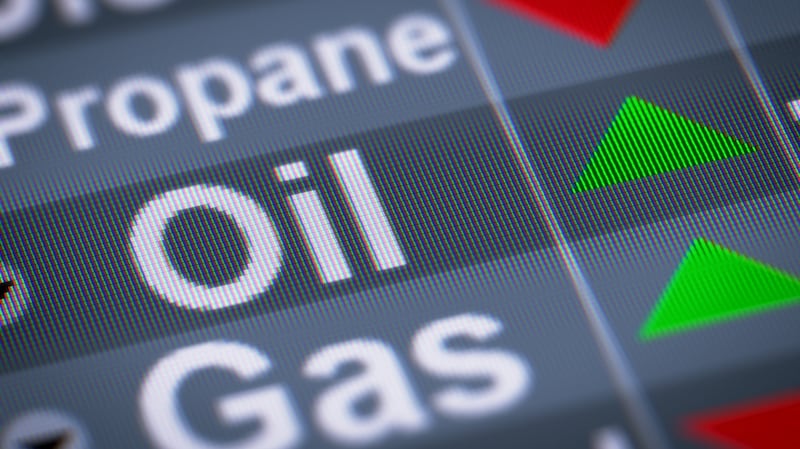Last year, European and North American oil and gas explorers wrote off about $145 billion (€125 billion) of assets on their books, as they abandoned investments in fossil fuel reserves and production operations, according to Ceres Accelerator for Sustainable Capital Markets, a US sustainability investment non-profit.
The overwhelming view was the game was up for Big Oil as the world moved at pace to a greener future and that oil prices – remember US crude contracts plunging into negative prices for the first time in history at the height of the Covid-19 shock in April 2020? – would remain low for years.
But as the world crept out of the lockdown this year, it’s found that we’re still addicted to the black stuff.

Agreement
It’s an uncomfortable truth that global leaders are having to confront as they prepare to gather in Glasgow in early November for a crucial UN Climate Change Conference (COP 26) to try and get the world back on track to reach the 2015 Paris agreement.
The stakes could not be higher. While the Paris accord aims to limit global warming to well below 2 degrees Celsius, ideally 1.5C, a UN report last month warned that the global average temperature will rise 2.7C by the end of the century – even if all countries stick to their promised emissions cuts. It’s a rise that is likely to lead to more extreme droughts, wildfires and floods.
Brent crude oil prices breached the $80 a barrel level this week for the first time in three years, leaving it 55 per cent above where it closed off 2020, as consumers take to their cars and the skies again and factories crank up production to meet a swell in demand for all kinds of things (while grappling a myriad of supply-chain and labour issues).

Meanwhile, a European benchmark price for gas – often pumped from the same wells – hit a record price of €100 a megawatt-hour during trading on Friday.
That’s up 175 per cent from where it was three months ago, as the continent, left with depleted stockpiles after a last year’s long and cold winter and recent need for gas to power the electricity market as wind stopped blowing in the North Sea, struggles to secure enough gas to prepare for the next cold spell.
The surge in utility bills we’ve seen in recent months is only set to continue.
Supply
A report from the Organisation of the Petroleum Exporting Countries (Opec) on the long-term energy outlook said that global renewable energy supply – from the likes of solar, wind and geothermal projects – will grow more than four-fold between 2020 and 2045. However, it will still only cover 10 per cent of all demand in a quarter of a century’s time.
The problem is that global energy demand is expected to increase by 28 per cent over the same period as the world’s population grows by around 1.7 billion to 9.5 billion. Oil demand is set to rise from a Covid-hit 82.5 million barrels a day last year to 99 million, albeit stabilising from about 2035 as a result of rising electric vehicle (EV) sales.
Still, it may come as a surprise – especially when you consider Irish Government plans, for example, to have 936,000 EV vehicles on our roads by the end of this decade – that EVs are only projected to make up a fifth of global vehicles in 2045, according to the report. That's because developing countries, which are driving population growth, are largely going to stick to combustion engines, it said.
Governments collectively responsible for 70 per cent of the global economy have committed themselves to slashing emissions to become net-zero by the middle of the century.

Targets
Announcing bold targets are always the easy part. The International Energy Agency (IEA) in Paris estimates that in order to get there, global oil supplies need to shrink more than 8 per cent annually, to fall to just 24 million barrels a day by 2050 – a quarter of where Opec sees demand.
While anyone vaguely concerned about the future of the planet would hope that Opec’s long-term projections prove to be way out, the world, for now, continues to be fuelled by oil.
The current oil and gas spikes may be partly down to companies slashing their drilling budgets as the pandemic raged.
But mainstream banks and finance providers that traditionally funded gas and oil exploration are also retrenching – and fast – as their own investors demand that they embrace environmental, social and governance (ESG) principles. In the meantime governments such as our own, are pulling back from issuing exploration permits.
Barryroe, Providence Resource's long-delayed oil project 50km off the Cork coast, may be the only Irish field that will ever produce a drop of black gold, after Minister for the Environment, Climate and Communications Eamon Ryan moved earlier this year to ban licences for new exploration and extraction.
And while US shale oil companies, largely funded by less-ESG-minded junk bond investors, have typically reacted nimbly to ramp up supply when prices spike, they are largely currently sticking to the sidelines.
Options
A Wall Street Journal editorial board piece this week laid the blame on president Joe Biden’s shoulders, saying his $3.5 trillion-plus spending bill, aimed at expanding social safety net programs and tackling climate change, includes royalty and fee increases “that would make US oil and gas producers globally uncompetitive”.
A cold winter could push brent oil contracts past $100 a barrel, Bank of America analysts said on Friday.
Transition shocks may come thick and fast in the coming years as the world sets off on the path to net-zero, according to many observers.
Some are already placing bets. Some traders have been buying options contracts in recent days, according to Bloomberg, that would deliver a profit if brent hit $200 just before Christmas next year.













